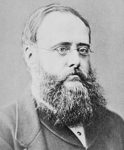 The Woman in White by Wilkie Collins
The Woman in White by Wilkie Collins Published by Audible Studios on August 27, 2010 (first published 1859)
Source: Purchased
Genres: Classic, Gothic
Length: 24 hrs 37 mins
Pages: 672
Format: Audiobook
Purchase at Bookshop.org or Purchase at Amazon
Add on Goodreads
'In one moment, every drop of blood in my body was brought to a stop ... There, as if it had that moment sprung out of the earth ... stood the figure of a solitary Woman, dressed from head to foot in white'
The Woman in White famously opens with Walter Hartright's eerie encounter on a moonlit London road. Engaged as a drawing master to the beautiful Laura Fairlie, Walter is drawn into the sinister intrigues of Sir Percival Glyde and his 'charming' friend Count Fosco, who has a taste for white mice, vanilla bonbons and poison. Pursuing questions of identity and insanity along the paths and corridors of English country houses and the madhouse, The Woman in White is the first and most influential of the Victorian genre that combined Gothic horror with psychological realism.
Walter Hartright, is walking down the street, his mind absorbed with his own problems, when suddenly a woman, dressed in white appears. She is clearly scared, and he walks with her toward London, eventually putting her in a cab and seeing her off. Shortly thereafter he is informed by two men who are chasing her that she had escaped from an asylum. And that’s all we see of the lady in white for now.
Hartright is left with a mystery. He takes a job as a drawing master, instructing two half-sisters as different as night and day. One is fair, and one is dark. One is pretty, and one is…well…unattractive. Marian is brave, brilliant, and resourceful, a marvelous character given the time period. Marian can hold her own. Hartright, of course, falls in love with Laura Fairlie, the fair and beautiful one, an heiress, an orphan, a woman in need of protection. Unfortunately, she is engaged to Sir Percival Glyde. Glyde is in serious financial trouble and needs her fortune. His closest friend is an Italian named Count Fosco, who conspires with him in a most insidious plot to take everything from Laura including, quite possibly, her own life. Count Fosco is one of the most fascinating, intelligent, and dangerous villains I’ve come across.
Collins does explore the idea of women’s rights. The law does not protect their rights in near the same fashion that it protects a man’s rights. A woman truly had to live by her wits to keep from being marginalized by the complete and nearly unassailable power of her husband or her father. Marian was a match for any man, but she needed much more than her intelligence to outflank the injustice and the discrimination under which she was forced to live.
The twist and turns to the plot are wonderfully revealed, including the identity of The Women in White. The writing is true Victorian style, which may put some readers off. In all honesty, I found it a bit long. Enjoyable no doubt, and a perfect read for this time of year, but parts were a bit slow. I’m happy I chose the audio version; Ian Holm, not surprisingly, does a wonderful job.

I remember reading this one and liking it not that many years ago. I like Victorian gothic, which sometimes feels slow to me.
I enjoyed it. I had tried to read in in print a few years ago and gave up. The audio worked well for me, probably because I could do other things while listening.
I read this a couple of years ago in the first year of my degree, it’s one of the Victoria novels that I actually enjoyed the most.
I enjoyed it. It was a bit long, but I liked how everyone had their own parts to add to the story.